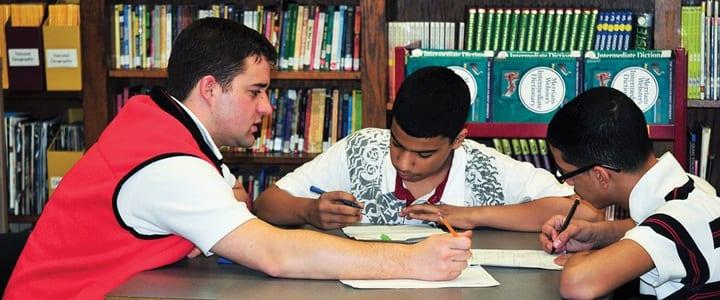Not sure if you’re practicing Spanish enough to reach your goals? Make sure you’re getting enough practice time with these tips from Spanish teacher Emmanuel N…
Some people might tell you that you need to practice Spanish every day for 30 minutes in order to really improve. While this may be true for some, it ultimately depends on your own specific needs and goals.
If you only have time for a five minute practice session once a week, that’s still better than not practicing at all! Try different methods and see what works best for you to help you make the most of your practice time.
Here are some more tips.
How Many Hours a Day Should I Practice Spanish?
If you’re serious about becoming fluent in Spanish, you’ll need to commit to practicing regularly. But how many hours a day should you practice? The answer may vary depending on your level of Spanish and your goals for Spanish practice:
- For beginners, it’s important to focus on mastering the basics. Aim to spend at least an hour a day practicing basic conversation skills.
- Once you’ve reached a intermediate level, you can start studying grammar and vocabulary for two or three hours a day.
- If you’re already proficient in Spanish and just want to keep your skills sharp, an hour of practice each day should suffice.
No matter how much time you spend practicing, it’s also important to make sure that your practice is effective. That means studying with quality materials, usingnative speakers when possible, and setting aside time for review and practice with new material.
By following these tips, you can maximize the efficiency of your practice sessions and make the most of your time.
Still stuck? You may want to sign up for Spanish lessons. Working with a Spanish teacher is one of the best ways to improve – plus you’ll learn cool concepts like what you see in the video below:
https://www.youtube.com/watch?v=NroDRzcLZH8
How Often Should You Practice Spanish?
The fastest way to learn Spanish is to practice and use the language as much as possible. Think about it, kids go to school five days a week from kindergarten to high school, and they use English constantly. They read, write, and learn new words and vocabulary. In order to learn a new language, you have to practice speaking, writing, and reading. Both Spanish conversation practice and Spanish reading practice are key!
You might be wondering what’s the fastest way to learn Spanish, and the answer is that it depends on how often you practice and use the language. So how often do you need to practice in order to improve? My recommendation: Every. Single. Day.
Find Time to Practice
I realize not everyone is able (or even willing) to practice every day, but it really is the fastest way to learn Spanish. If you want to learn and improve, you need to make a commitment and find time to practice. When it comes to Spanish, just like any other skill, practice is the key to learning. This doesn’t mean you need to study constantly or complete limitless assignments and homework.
Make Learning Fun
Learning Spanish can be fun, and it’s important to find a study strategy that works for you. Here are two effective learning strategies that you can try.
- Listen (and sing along if you want) to Spanish songs. Find videos on YouTube that have English translations for the Spanish lyrics. You can also do this yourself: find the Spanish lyrics and use Google to translate the words. This will be easier if you understand Spanish expressions, and the best way to learn this is through conversations.
- Watch Spanish shows and movies, or English shows and movies that are translated in Spanish. If you’re a beginner, turn on the English subtitles to help you follow along. It may be difficult to understand the shows at first since fluent Spanish speakers speak pretty fast, but you’ll be able to understand more words and phrases as you continue to practice.
Find a Teacher
I have shared some ideas and suggestions to help you improve your Spanish, but at the end of the day it always helps to have someone to help you study. Not everyone has Spanish-speaking friends or relatives. This is where a Spanish tutor can help. I like to structure my Spanish lessons like conversations you would have with a Spanish-speaking friend. I understand that learning a new language is difficult, and I try to encourage my students when they make mistakes. A teacher can offer extra help if you’re struggling, and help you determine what you want to learn and practice.
Do Your Homework!
I’m a firm believer in homework as a study tool. Just because the lesson is over, doesn’t mean you’re done learning. Here are some things you can do on your own to practice your Spanish between lessons.
- Write (in Spanish) about your day, week, or weekend.
- Write down all the Spanish words you hear during the day that you don’t understand. Ask your teacher to explain the words in your next lesson.
- Watch your favorite show and describe the plot in Spanish.
How Can I Practice Spanish Everyday?
A great way to practice your Spanish skills is to find a Spanish-speaking buddy. This could be a friend, coworker, or family member. You can also look for online communities of Spanish learners.
Another way to practice is to immerse yourself in Spanish content. This could include reading Spanish books and newspapers, watching Spanish movies and TV shows, and listening to Spanish music.
You can also try using a language learning app like Duolingo.
By setting aside some time each day to practice, you can quickly improve your Spanish skills.
How Long Does it Take Average Person to Learn Spanish?
There is no definitive answer to the question of how long it takes to learn Spanish. The amount of time required depends on a variety of factors, including the individual’s natural language ability, motivation, and opportunity to practice.
However, most experts agree that it takes approximately 600 hours of study to reach a basic level of proficiency. This includes both formal instruction and informal practice, such as conversation with native speakers.
For someone who is already familiar with another Romance language, such as French or Italian, the process may be somewhat shorter. In general, however, it is safe to say that learning Spanish requires a significant investment of time and effort.
The Key? Practice Spanish as Often As Possible!
Anyone looking to learn Spanish knows that, at first, it’s tough going. You struggle to piece together words and phrases, and you inevitably make mistakes. It can be frustrating, and you might be tempted to give up.
However, the key to becoming proficient in Spanish is simple: practice as often as possible. The more you use the language, the better you’ll become at understanding and using it yourself. And while it’s important to practise speaking and writing, don’t forget about listening too.
By making a point of listening to Spanish radio or TV, or reading Spanish books and articles, you’ll gradually build up your understanding of the language.
How often should you practice Spanish? It varies – but consistency is always key.
With time and practise, you’ll find that learning Spanish becomes easier and more enjoyable – so stick with it!
I’m Latino, but English was my main language because I used it in school. After years of practicing with my family, I managed to improve my Spanish. I’m not fluent and I may not have the perfect accent, but I never gave up on learning. I encourage you to do the same to learn Spanish; challenge yourself, stick with it, and have fun!
Emmanuel M. teaches Spanish online. A California State University, Fullerton graduate and native Spanish speaker, he also teaches essay writing, study skills, and singing. Learn more about Emmanuel here!
Photo by City Year
Maile Proctor


